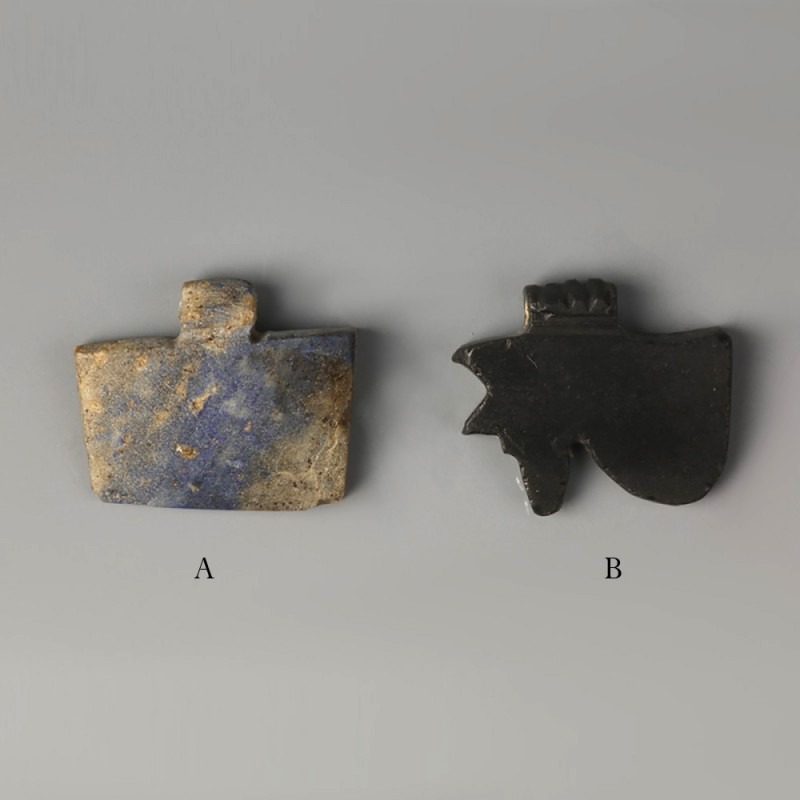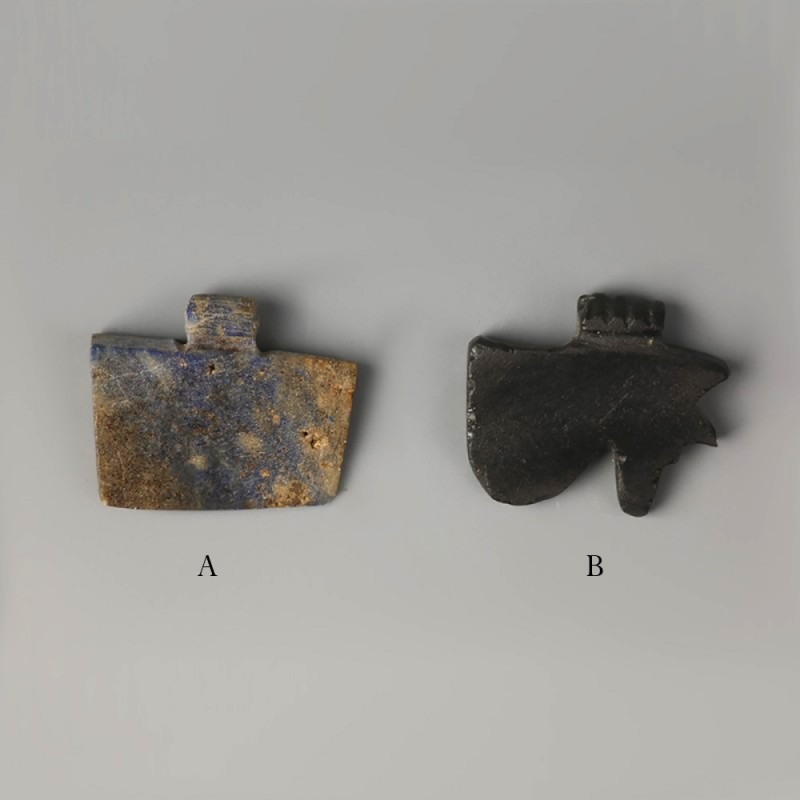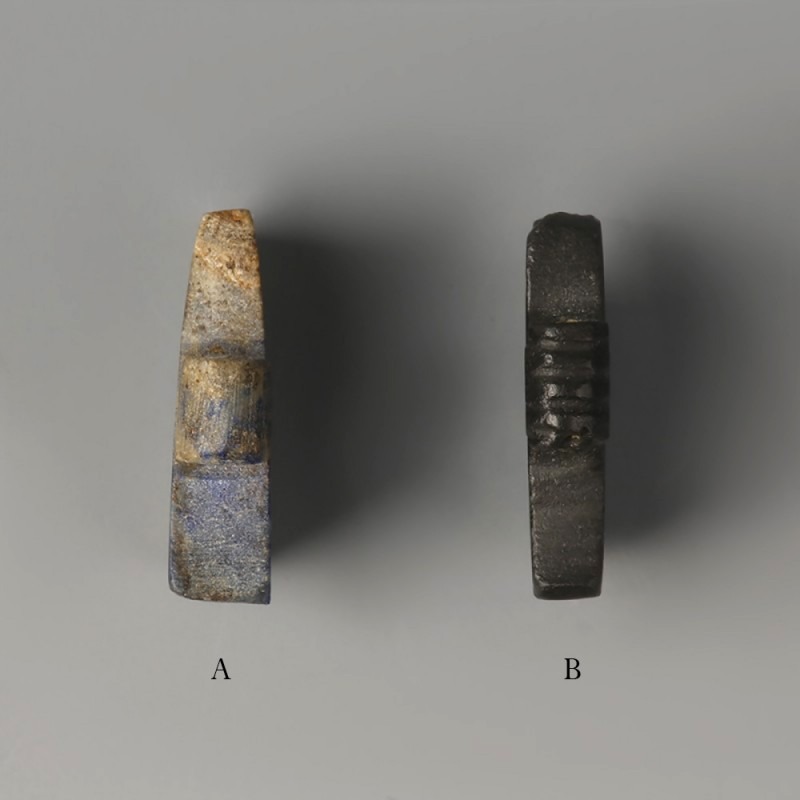The Egyptians wore amulets alongside other pieces of jewellery. They were decorative, but also served a practical purpose, being considered to bestow power and protection upon the wearer. Many of the amulets have been found inside the wrappings of mummies, as they were used to prepare the deceased for the afterlife.
Horus was one of the most significant Ancient Egyptian deities. He is most commonly depicted with the head of a falcon, and the body of a man. Horus was a sun and moon deity, and it was said that his right eye was the sun, and the left was the moon. The eye of Horus, also known as ‘Wedjat’, was an ancient symbol of protection, particularly for the afterlife, and was also used to deflect evil. For this reason it was often worn or hung on the deceased at burial. It was highly influential in Egyptian life, with ancient sailors painting the image on the bow of their vessels to ward off evil.
The term ‘wadj’ translates to ‘green’, so these amulets were often made from green faience and green semi-precious stones.
To find out more about Ancient Egyptian amulets please see our relevant blog post: Egyptian Amulets and their Meanings: Ancient Egyptian Gods.


